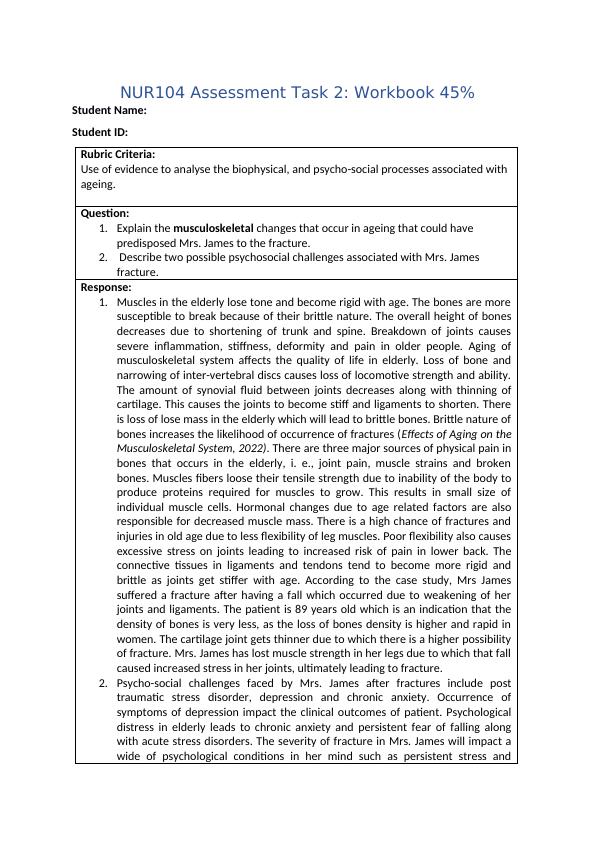NUR104 Assessment Task 2: Workbook 45% - Musculoskeletal and Psychosocial Changes in Ageing, Social Justice Principles, and Care Planning for Mrs. James
5 Pages2150 Words429 Views
Added on 2023-06-04
About This Document
This workbook covers musculoskeletal and psychosocial changes in ageing, social justice principles, and care planning for Mrs. James. It explains the musculoskeletal changes that occur in ageing and the psychosocial challenges associated with fractures. It also discusses the principles of access and participation and provides four actions that the nurse could take to assess and provide care appropriate for Mrs. James’s situation to reduce risk, promote health and ensure safety.
NUR104 Assessment Task 2: Workbook 45% - Musculoskeletal and Psychosocial Changes in Ageing, Social Justice Principles, and Care Planning for Mrs. James
Added on 2023-06-04
ShareRelated Documents
End of preview
Want to access all the pages? Upload your documents or become a member.
(DOC) Assignment on Anatomy and Physiology
|4
|963
|30
Health Awareness about Arthritis in Elderly People
|10
|2228
|383
Pain Management in End Stage Renal Disease: A Case Study
|12
|3655
|176
Diploma of nursing.
|33
|4755
|8
Physical Therapy Osteoarthritis Intervention
|13
|2836
|30
Fall Risk Assessment and Interventions for Patients with Mobility Limitations
|10
|2596
|495


